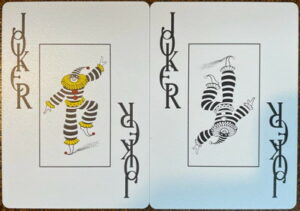 If you think about card games, then you’re likely to consider various options. Blackjack, poker, rummy, Casino War, baccarat, and so on. Each of those games utilises playing cards in one way or another. It’s also the case that each one uses different numbers of decks of cards. That’s why it’s ideal to know the rules and setup of each card game you may decide to play. This is the key with any game, of course. Yet there is one playing card that doesn’t always have a role to play.
If you think about card games, then you’re likely to consider various options. Blackjack, poker, rummy, Casino War, baccarat, and so on. Each of those games utilises playing cards in one way or another. It’s also the case that each one uses different numbers of decks of cards. That’s why it’s ideal to know the rules and setup of each card game you may decide to play. This is the key with any game, of course. Yet there is one playing card that doesn’t always have a role to play.
A standard deck of cards tends to feature 54 cards in total. This includes the 52 standard playing cards and two joker cards. Often times, the jokers are unnecessary in the game you’re playing and they end up discarded and left to one side. Yet there are certain card games where the jokers remain in the deck. It is these games that we want to look at today. We’ll explain how the jokers come into use within those games. This way, should you want to play these titles yourself, you know what to expect from them.
Joker Card Comes From The United States
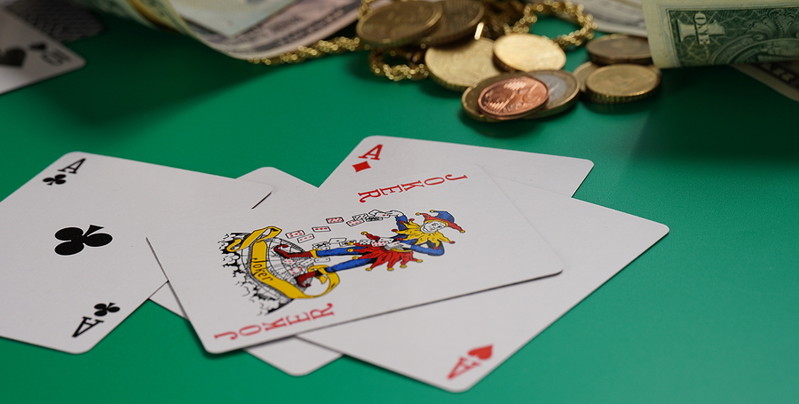 The Joker exists as a playing card in most modern French-suited card decks. It is there as an addition to the four standard suits – Clubs, Diamonds, Hearts and Spades. They were also included in Spanish and Italian decks at a later time.
The Joker exists as a playing card in most modern French-suited card decks. It is there as an addition to the four standard suits – Clubs, Diamonds, Hearts and Spades. They were also included in Spanish and Italian decks at a later time.
It is key to point out that the Joker originated in the United States of America. It was during the country’s Civil War that it first made an appearance. In the game of Euchre, it existed as a trump card. From that point on, many other games adopted the Joker card, where it often acts as a wild inclusion.
Use in the Game of Euchre
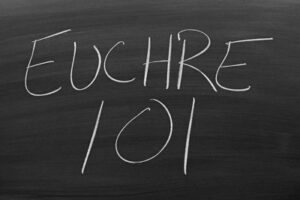 As noted, it is the game of Euchre that takes credit for the introduction of the Joker card. Even so, the game did not use them in its original format. Back in the earliest incarnation of the game in 1844, 32 standard cards are active. It was only in the 1850s that the Joker became a part of the standard 32-card pack. Yet it was because of the game of Euchre that this became so. This card is first mentioned in the game’s rules in 1868. The rules highlight it as a blank specimen card, though. It wasn’t intended for actual gameplay.
As noted, it is the game of Euchre that takes credit for the introduction of the Joker card. Even so, the game did not use them in its original format. Back in the earliest incarnation of the game in 1844, 32 standard cards are active. It was only in the 1850s that the Joker became a part of the standard 32-card pack. Yet it was because of the game of Euchre that this became so. This card is first mentioned in the game’s rules in 1868. The rules highlight it as a blank specimen card, though. It wasn’t intended for actual gameplay.
As a result, a variant of the game arose, entitled Euchre with the Joker. The blank card ranked above all the others in this version. The likelihood is that the card was in use a lot earlier than ’68, though. It is only in the late ’60s that cards labelled “Joker” came into production. Some of them depicted clowns and jesters.
Euchre remains as a common card game in Australia, Canada, the UK, and elsewhere. It’s a trick-taking game, played with 24, 28 or 32 cards. It is usual for four players to engage in it, with two on each team. Variations do exist on this, though. The standard game of 24 cards consists of the A, K, Q, J, 10 and 9 from each suit. It can also occur with 25 cards, incorporating the Joker. Each player receives five cards in clockwise order. The first player gets three cards, the second two. This continues alternating until the dealer has three cards. A further batch of cards is then dealt out to each player, ensuring each has five cards.
The remaining four cards, or five if a Joker is present, go face-down on the table. The top card is then turned over, and bidding begins. One of the suits becomes the trump suit, with the jack in that suit becoming a member of such. Any card of that suit outranks any card of a non-trump suit. If a Joker is in use, this is always the highest-ranking card in Euchre. The game has various other rules and systems to follow. It is always the case that the Joker is the highest card in it, should it be in use.
Use in the Game of Canasta

The game of Canasta sits in the rummy family. Many believe it to be a variant of 500 Rum. In fact, there are several variations of Canasta. These cater to two, three, five or six players. Its most common for four players to play in two partnerships. Two standard decks of cards are in-play, and players need to create seven cards of the same rank.
Canasta is a game that was actually devised by an attorney. Segundo Sanchez Santos and his Bridge partner thought it up in Uruguay in 1939. The idea behind it was to create a game which would be as engaging as Bridge. Trying it out with two friends, Canasta received a positive reception at their local bridge club. It didn’t take long for the game to spread through South America. In 1949, it came to the USA and then continued onwards to Canada and beyond.
The classic game requires two teams of two, with partners sitting opposite each other. Two complete decks of 52 cards plus two or three Jokers per deck come into play. The dealer shuffles the pack, the player to their right cuts, and then 11 cards go to each player. The remaining cards remain in the centre of the table, face-down. A single card is then turned over from it.
Players take turns, either drawing the first card from the remaining stock or by picking up from the discard pile. The idea is to gather as many cards to fit into a combination as possible. This consists of at least seven cards, creating sets or runs. Different cards have different points values, too. The Joker serves as a wild card, so you can utilise it in any way in a combination. It also comes with the highest score, awarding 50 points when in a meld.
Use in the Game of Gin Rummy
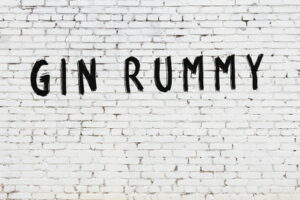 Gin rummy, also known as gin, is a two-player game. As its title suggests, it is a variant of rummy, and it is a popular social card game. Created in 1909 by Elwood T. Baker and his son, it was local to New York until 1941. At that point, it spread through the USA thanks to it becoming a Hollywood fad. The game features all 52 cards in a deck, ranking from high to low from K downwards.
Gin rummy, also known as gin, is a two-player game. As its title suggests, it is a variant of rummy, and it is a popular social card game. Created in 1909 by Elwood T. Baker and his son, it was local to New York until 1941. At that point, it spread through the USA thanks to it becoming a Hollywood fad. The game features all 52 cards in a deck, ranking from high to low from K downwards.
The goal of the game is to be the first player to reach an agreed-upon score. This is usually 100 points. Players improve their hands by creating melds. At the same time, they cut any deadwood in their hands. Two types of melds are possible when playing gin. Sets of three or four cards sharing the same rank is one meld. Runs or sequences of three or more cards in the same suit is the other. Aces serve as low cards, so can only appear at the low end of runs. Aces score one point, face cards score 10, while others score according to their numerical values.
Like with Canasta, a Joker appearing in a version of gin rummy serves as a wild. This means that it can operate as any number within a set or run sequence.
Use in the Game of Poker
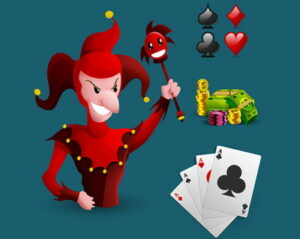 Everyone has heard of poker in the gambling world. It’s one of the world’s most famous card games in all fairness. Many versions of it exist, with players wagering on which hand will be the best. The rules may vary from game to game and location to location. Early variations only used 20 cards, but it is common to use full decks today.
Everyone has heard of poker in the gambling world. It’s one of the world’s most famous card games in all fairness. Many versions of it exist, with players wagering on which hand will be the best. The rules may vary from game to game and location to location. Early variations only used 20 cards, but it is common to use full decks today.
It is common for a Joker card to be a wild in many card games. If it appears in poker, some games will see it operate in the same way and it can help to create a better poker hand for a player who manages to receive it. Yet this isn’t its only status in the world of poker. There are some versions that label it as a “bug”. This is a limited form of wild card. One or both Joker cards can appear as part of the deck and played as bugs. In high draw poker and Pai Gow, players consider the bug to be an ace. In other versions, the Joker bug card can only come into use to complete straights and flushes.
Use in the Game of War

War serves as a simple casino game. Sometimes known as Battle in the United Kingdom, it is common for two players to partake. In fact, War is often played by children, too – outside of a casino setting, of course. The idea behind the game is to win all the cards in play. Each player gets half of the deck in a down stack. Each player reveals their top card in unison, and this is the battle that takes place. The player with the higher card takes both cards, moving them to their stack. Aces are high and suits mean nothing.
Two cards of an equal value means that a “war” takes place. Both players take the next card in their stack, placing it face-down. Then, they place the next card face-up. The owner of the higher face-up card wins the war and takes all cards to the bottom of their stack.
Jokers can come into play in the game of War, beating out all other cards and they become the highest card within the game, outranking aces. They aren’t always present in the deck, but some versions incorporate them.
Use in the Game Crazy Eights

If you haven’t played a “shedding-type” card game before, Crazy Eights is a good place to start. Between two and seven people can play at once. The object of the game is to be the first one to discard all your cards. This has a similarity to Switch and Mau Mau. In history, Crazy Eights has links to children’s games. They would use the leftover cards from Euchre to play it. Now it uses a standard 52-card deck.
Each player receives five cards, and the remaining ones go face-down in the centre of the table. The top gets turned over to start the game as the discard pile. Players discard by matching rank or suit with the top card of this pile. Any 8 card can come into play at any time, giving the chance to change the suit in play. Where does the Joker come into play in Crazy Eights?
Anyone holding a Joker in their hand can use it as a “skip” card. This is playable on top of any card on the discard pile. At the same time, it forces the next player in line to miss a turn.
Use in the Game Go Fish
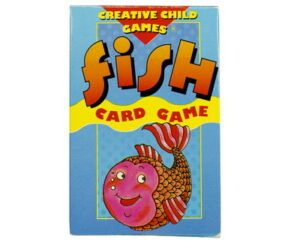 Between two and five people usually play the game of Go Fish. It can also feature up to 10 players at a time, though. Go Fish is one of the speediest card games, often finishing in 5 to 15 minutes. Each player receives five cards from a standard deck (or seven cards if only two people are playing). The remaining cards are available for everyone. These are usually spread out in a pile referred to as the “ocean” or “pool”.
Between two and five people usually play the game of Go Fish. It can also feature up to 10 players at a time, though. Go Fish is one of the speediest card games, often finishing in 5 to 15 minutes. Each player receives five cards from a standard deck (or seven cards if only two people are playing). The remaining cards are available for everyone. These are usually spread out in a pile referred to as the “ocean” or “pool”.
The gamer whose turn it is asks another participant for their cards of a particular face value. This must be a card that they also hold. Player A could hold two aces, a 5, a 7 and a 10. They could then ask player B if they have any 7s, because player A has a 7 in their hand. Player B then has to hand over all cards they own of that rank, if possible. If they don’t have any, they tell player A to “Go Fish”, making player A draw from the pile. Unless player A draws a 7 from the pile in this instance, play moves on to the next person. Players holding four cards of one face value form a book with it. They are then placed face-up in front of their table position.
When all sets of cards are face-up on the table, the game ends. The player with the most books of cards wins.
Jokers can appear in Go Fish, too. These are usable in forming a pair, by asking another player if they have any jokers. Owning two of them form one pair. This relates to when two players are playing, rather than more. In such a circumstance, players need to form pairs of cards, rather than books. Two Jokers make up a pair that can come into play face-up for any player.
